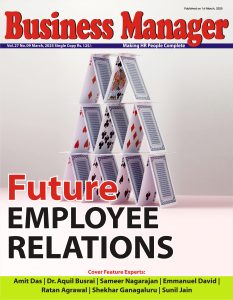The transition to remote work has altered how businesses operate. In the post pandemic environment companies have shifted toward a distributed workforce, in which team members work remotely from multiple locations, rather than being required to be physically present in a central office.
One of the key advantages of distributed work models is the flexibility it offers to employees, which can be an effective strategy to retain top talent in an unpredictable market. By allowing employees to work from home or other locations, companies can offer their employees a better work-life balance, which is increasingly important to many workers, according to the findings of the Remote Workforce Report. This can lead to increased job satisfaction, leading to higher employee retention rates.
The world of such kind of work is experiencing significant growth, with distributed workforces expanding rapidly over the past year, both domestically and internationally. However, as these workforces grow, some businesses are grappling with challenges related to office space and entity setup costs when hiring abroad.
Besides work flexibility, distributed work models offer many advantages that help companies grow:
Long-term worker retention: Retaining talented employees is critical for any businesses’ success. Not only do long-term employees help the company maintain a competitive edge, but turnover can cost companies up to 6-9 months of salary to find, replace, and train new workers. Distributed flexibility is highly desired by many candidates today. A majority of those working in a distributed workforce say retention has increased since adopting a distributed workforce model, and more than half (57%) say a distributed workforce makes it easier to hire and keep talent.
Productivity as one of the main advantages of distributed remote work: When businesses use a fully distributed workforce model, productivity rises. The adoption of a distributed workforce model has enhanced productivity, according to more than 50% of those using an in-country distributed workforce model and 72% of those using an international distributed workforce model. Overall, productivity and staff retention are the main advantages of this kind of work. A rise in staff productivity is also attested to by decision-makers in suchorganisations.
Also read: Balancehero India implements an unlimited leave policy
Diversified talent pool: Distributed work models allow companies to build more diverse teams by accessing a wider pool of talented professionals. Rather than hiring from their immediate surrounding area, companies can attract and retain top talent regardless of their geographical location. Out of office location jobs are also more accessible for those with disabilities, or those with caretaking responsibilities, who are looking to work from home.
The world of such kind of work is experiencing significant growth, with distributed workforces expanding rapidly over the past year, both domestically and internationally. However, as these workforces grow, some businesses are grappling with challenges related to office space and entity setup costs when hiring abroad.
Currently, distributed international workforces tend to have more office locations compared to their in-country out of office and in-office counterparts. Moreover, many companies hiring abroad are setting up legal entities in the countries where they are hiring, which can be a lengthy and costly process. Despite these challenges, the primary motivation for hiring remotely and internationally is to find higher-quality candidates, and businesses need to consider the long-term benefits of hiring based on talent and ability rather than location, as it can lead to higher retention and greater productivity.
Overall, the outlook for distributed work remains positive, as companies increasingly recognize the operational and cost efficiencies that distributed work can offer. Despite financial challenges, businesses are forging ahead with hiring talent abroad, recognizing the significant competitive advantages that distributed teams can provide in shaping the future of work.
Stay connected with us on social media platform for instant update click here to join our LinkedIn, Twitter & Facebook




















